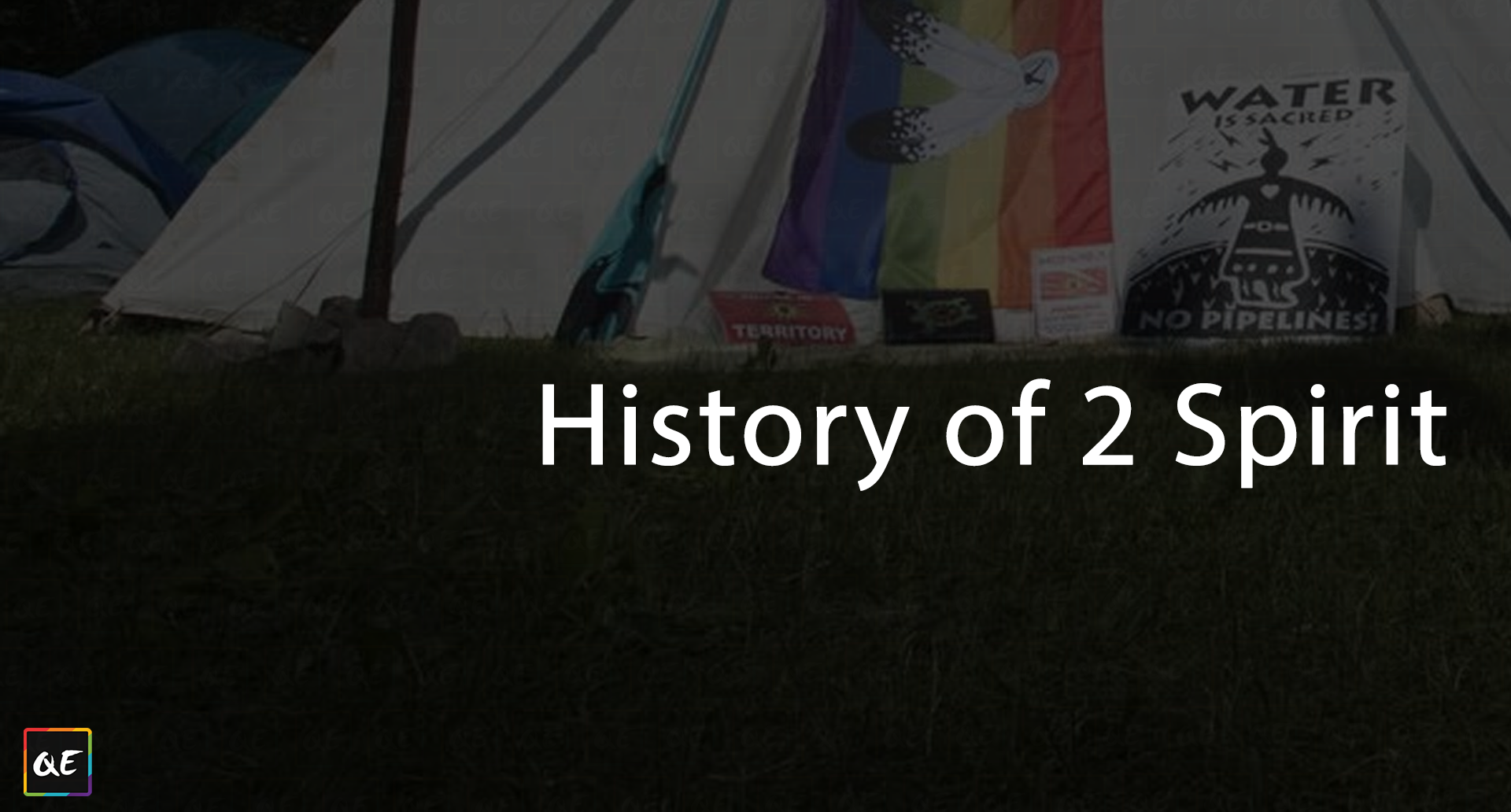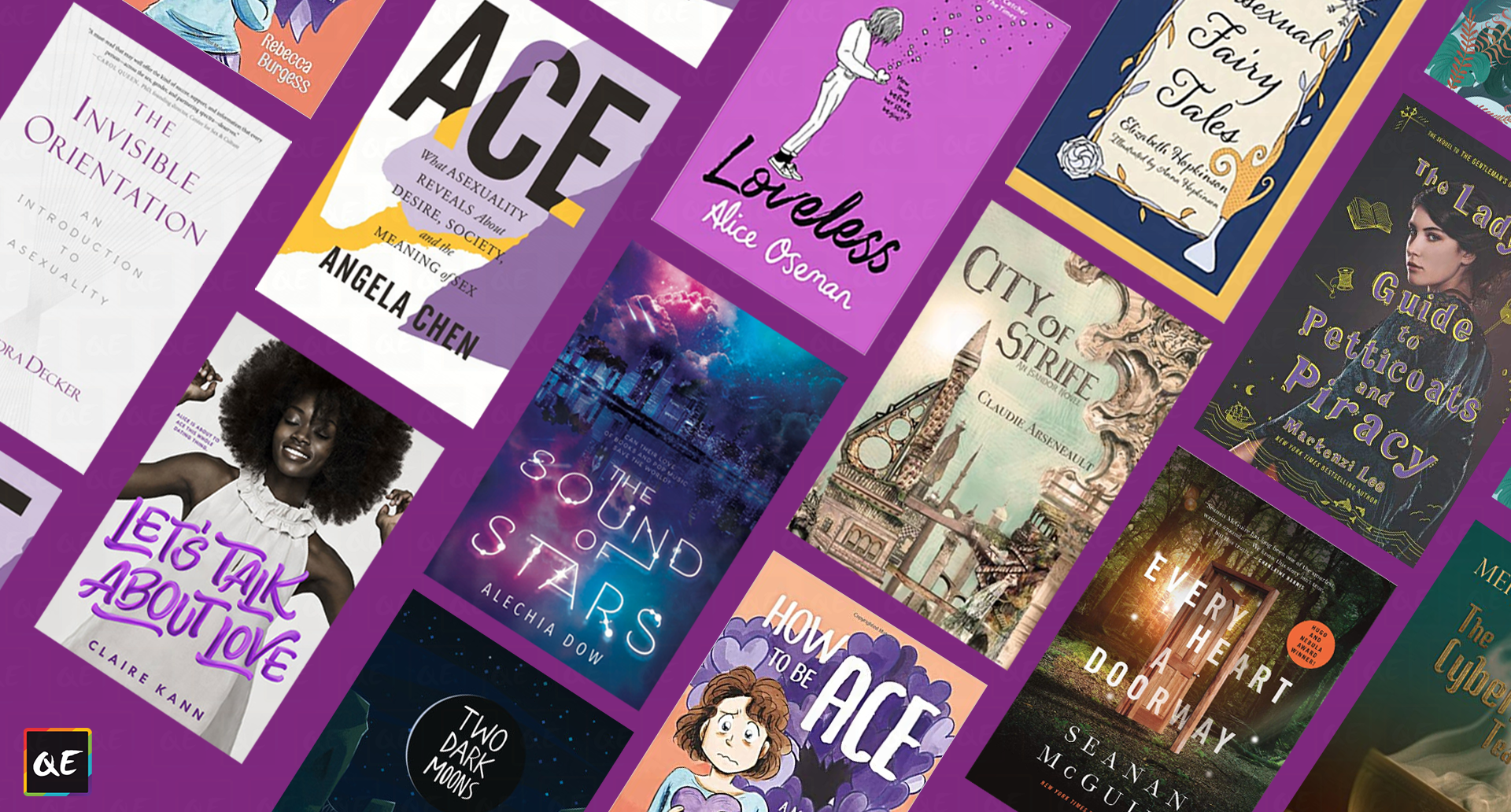
History of Two-Spirit
Combining and confounding binary gender roles since the beginning of history, Two Spirited people are fundamental components of both Indigenous communities and the Queer community today and are often visionaries, healers and medicine people.
Impacts of Colonization

To begin to understand the history of the term, we need to understand the impact of colonization of Indigenous peoples. Prior to European colonization, the treatment of Two-Spirited people in Indigenous communities was as diverse as the communities themselves and many often held ceremonial roles and were regarded with high-esteem. After colonization, homophobic European beliefs and a vilifying of homosexuals perpetrated by religious institutions and missionaries created a culture change to one that forced hetero-normativity in order for communities to survive.
The Canadian Residential School system further ingrained this within Indigenous culture and society through the separation of children from their communities and culture as well as teachings that were reinforced with torture. As more generations were taught that homosexuality was "wrong" and punishable by beatings and more extreme punishment, the more ingrained homophobia became as a result of colonization. By the 1840's, the traditions of Two-Spirit people had been driven out of many Indigenous Nations. This was only one of the many damaging consequences of colonization on Indigenous communities.
Reclaiming Tradition and De-Colonizing

In the early 1990s, as part of an effort to reclaim traditions, Indigenous peoples sought to find a word or phrase originating from an Indigenous community to replace the colonial term “berdache” that was frequently used by anthropologists and non-Indigenous appropriators throughout the 19th and 20th centuries. (The term “berdache” is considered today to be derogatory and offensive). Although there were terms in various Indigenous languages to describe third and fourth genders as well as homosexual people, they wanted a contemporary term that could be used to describe a wide range of nation-specific genders and sexualities, and to facilitate inter-nation organizing.
“It is sacred and is more than just words – it is a spirit/heart language (if you know what I mean). When Two-Spirit is used it invokes our sacredness and reminds us that we have always been here, and we will be always be here. As a result, with Two-Spirit comes a great responsibility, to those who use it, as we walk and work in sacred way with and for our people.”
- Dr. Myra Laramee
The term “two-spirit” itself was introduced by Fisher River Cree Nation Elder Myra Laramee through a vision she had prior to the gathering. Within this vision, Myra shared the vision she had of her Anishinaabemowin name of niizh manidoowag; which roughly translates to having the ability to be neutral through the lens of having both a feminine spirit and masculine spirit within one's body.
The Basket and the Bow

In the 1970s, Queer Indigenous people began organizing around their Indigenous identities and cultures as a way to reclaim traditions and as a response to the erasure and racism many were facing within the Queer community. in 1987, many Queer Indigenous people were part of the Second National March on Washington for Lesbian and Gay rights - a march that had been prompted by the growing AIDS pandemic and the criminalization of sex between two consenting men in the USA. However, like other queer people of colour, the community soon found that they were on the margins of the movement even though it was devastating urban Indigenous communities at this time. This crisis prompted community leaders to reach out and gather Queer Indigenous peoples to both work to prevent further cases and also to share and reclaim Two-Spirit teachings and ceremonies.
In the summer of 1988, the first formal gathering named The Basket and The Bow, brought together Two-Spirit people from across Turtle Island (USA and Canada) in Minnesota at the Minneapolis American Indian Centre. Since then the gathering has traveled across Turtle Island alternating every year between the colonial defined borders of Canada and the USA.

From July 27 to August 5, 1990 the 3rd North American Native Gay & Lesbian Gathering was held in Beausejour, Manitoba. It was at this gathering that Albert McLeod proposed the term ‘Two-Spirit’ to describe a wide range of nation-specific genders and sexualities. The term was well-received by the conference attendees and soon gained popularity within Indigenous communities.
“It is important to note that with the assertion of this new term, it was an act of sovereignty of body and land. The community rejected the colonial and offensive term of ‘berdache’ and replaced it with Two-Spirit. “Spirit-naming is an important part of my identity and healing. Embracing the Two-Spirit name has defined our place in Indigenous history and culture.”
- Albert McLeod
To oganize, heal and resist together
Most Indigenous communities have specific terms in their own languages for the gender-variant members of their communities and the social and spiritual roles these individuals fulfill. Each nation’s understanding of gender and sexual diversity is different and grounded in specific spiritual beliefs. Even with the modern adoption of pan-Indigenous terms like Two Spirit, not all cultures will perceive two spirit people the same way, or welcome a pan-Indigenous term to replace the terms already in use by their cultures.
Today, while many embrace the term for its Pan-Indigenous solidarity through which Indigenous peoples are able to organize, heal and resist together. some Queer Indigenous people may choose to reject the term altogether, choosing to identify solely with their Nation's traditions, for some, the term may simply be one they don't feel connected to, and others may have never heard of the term before. Queer Indigenous people are diverse and all of their identities are valid.
We can never forget that Two-Spirited people have survived centuries of colonial violence and prejudice. The struggles of the Two-Spirit community are unique, and come with historic scars, but the resiliency of our communities against colonization, leads the way for our community and our future. Despite colonization, Two-Spirits are still here, have always been here and will always be here.
Important Note to Non Indigenous Readers: It is important to remember that Two Spirit is not a term that can be used by non-Indigenous people to adopt for themselves.
For more information/suggested reading:
- Albert McLeod fonds, University of Winnipeg Archives, Winnipeg.
- Two-Spirit Papers, 1937-2007, undated, Jean-Nickolaus Tretter Collection in Gay, Lesbian, Bisexual and Transgender Studies, University of Minnesota Libraries, Minneapolis.
- Two-Spirited People of Manitoba Inc.
- Our Stories e-Textbook (2018, June 15) Ma-Nee Chacaby talks about Two Spirit identities, YouTube
- We Matter Campaign - Two Spirit Dictionary
Media Credits
In order of appearance
- 2018 Siletz Pow-Wow Sign | Credit: Lisa Norton/Confederated Trribes of the Siletz
- Image from the 1990 gathering where ‘Two-Spirit’ was gifted to the community in ceremony. Centre: Dr. Myra Laramee, Beverly Littlethunder, and Barbara Bruce. Credit: Albert McLeod
- Itinerary for the North American Native Gay and Lesbian Gathering, 1990. Credit: University of Winnipeg Archives, Albert McLeod fonds (11.011)
- Itinerary for the North American Native Gay and Lesbian Gathering, 1990. Page 2 Credit: University of Winnipeg Archives, Albert McLeod fonds (11.011)
Food for Queers
Stay Safe. Not Hungry
Providing support for 2SLGBTQ+ folks experiencing food insecurities within the city of London










